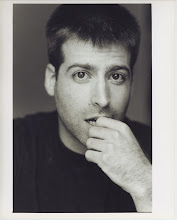Husserl focuses on the object-subject relationality and establishes the conditions through which phenomenological observation enables an objective stance for a given subject. Objectivity, according to him, can only arise within a subjective standpoint. Phenomenological observation, thus, allows a specific body/subject a view onto the truth of objects in the world. This truth is always in relation to one’s own body as the “zero point of orientation” (p. 12) in the “normal perceptual conditions” (p. 14). He establishes the body’s senses and ability to move freely as what constitute the apprehension of spatial world for the body/subject even as it exists within the world. According to him, things in the world appear to us in two interwoven ways: the first consists of the thingly parts of things, actual pieces of the whole that can each be considered a thing in itself; the second consists of aspects that cannot exist separately from the whole, for example, color, texture, or the sequence of appearances of things through time that constitute the causality of things in the world.
Husserl makes a distinction between the Natural Attitude, in which we experience and identify the world and things as they are given to us, and the (phenomenological) Subjective Attitude, in which the “given-ness” of things can be scrutinized through the spatio-temporal relation to the subject/body. Only in the second attitude, he claims, can observation become objective for the subjective body in relation to the things observed and/in the world.
“The Constitution of Psychic Reality through the Body.” In Don, Welton (ed.) The Body: Classic and Contemporary
Here Husserl starts off by following the sense of touch to demonstrate its doubleness: when a hand touches an object it perceives the tactility of surface of the object as well as its own tactility. In this sense, the touching body knows itself through touching things in the world. This double sense of touch is complicated by the ability of the body to move towards touching and as it touches, thus taking an active role in the sensing process. Once again the body perceives itself through its intentionality towards things in the world.
Husserl goes on to discuss the difference between the senses, particularly between vision and touch. From this distinction he concludes that it is through touching that the body knows itself and becomes a body; that is, the hand exists through the perception of touching and being touched as well as to the ability to move freely as the manifestation of the subject’s free will. It is, then, present to us quite differently than all other presences in the world. We apprehend it as a real thing in the world through its integration with the causal nexus of things in the world. It is in this relationality that the self is constituted. Psychic reality exists, therefore, only through the perceived reality of the world, in the nexus of spatial and causal-temporal perception of the world and of things in the world in relation to one’s body/self as the subjective center of this process.
Husserl’s language is not easily understood and deciphered. Many of the terms he uses may appear to have a counterintuitive meaning in the way he uses them. Intentionality, for example, has nothing to do with conscious decision that the word intention connotes. It is the ability to perceive, the channel through which perception operates and which links our body to the “thingly-world”. In order to, once and for all, grasp the full significance of his work I turned to other sources for clarification. I read Donn Welton’s chapter “Soft, Smooth Hands: Husserl’s Phenomenology of the Lived-Body.” (in Welton, 38-56). I also turned to Introduction to Phenomenology by Robert Sokolowski (
One of the things that strikes me while reading Husserl is the feeling that he is trying to escape Decartes' assumptions about our being in the world while being trapped in a Cartesian language. For example, he repeatedly mentions the body and the ego: the first as the material extension of the second. Thus, Husserl's attempt to go against Cartesian duality requires the use of a language that reinforces that duality. If Body is extension of Ego then there is an Ego separate from the Body. Though he tries to escape this paradox, it seems to be within the confines of Cartesian Language.

2 comments:
An interesting critique of Husserl and his reliance on Cartesian categories. You might find it helpful to consider how his ideas about touch do and do not overlap with those of Merleau-Ponty.
touch according to Husserl is a process though which the body acquires knowledge of the object it touches and of itself. In Husserl's description the touching hand senses two things--the surface of the table and its own surface. There is a separation here, a differentiating doubleness. In opposition, Merleau Ponty's account of touch is all but clear distinction between touched object and touching hand. First, according to MP touching cannot be separate from seeing, they are interconnected. In addition, the hand knows itself through touching as an act of unification with the object that is never fulfilled. I elaborate on this in the section about Phenomenology of Perception.
Post a Comment